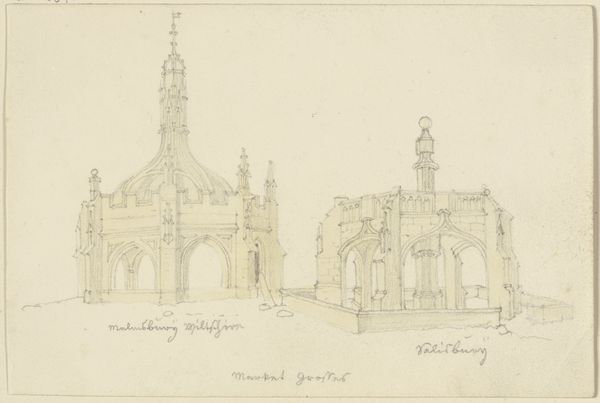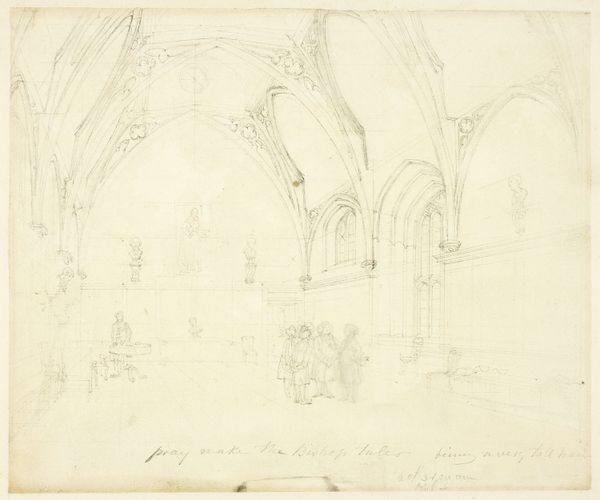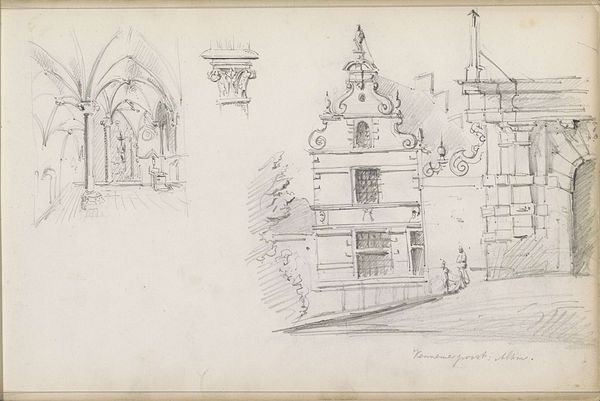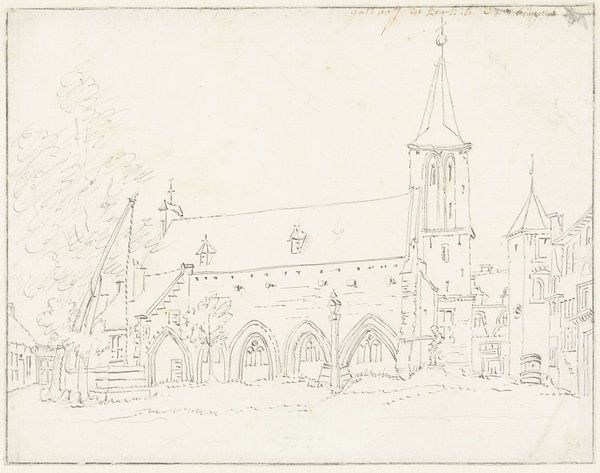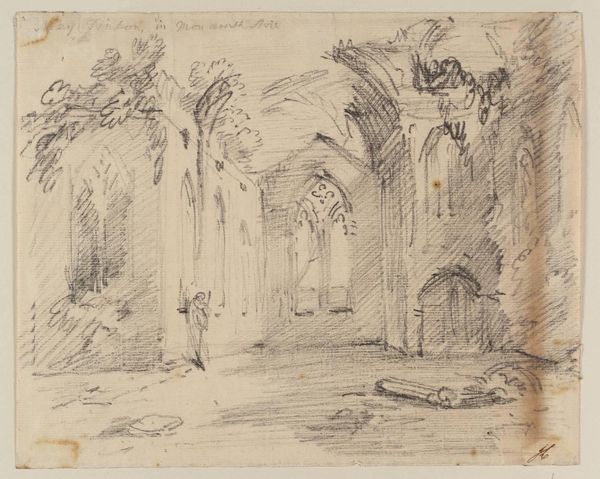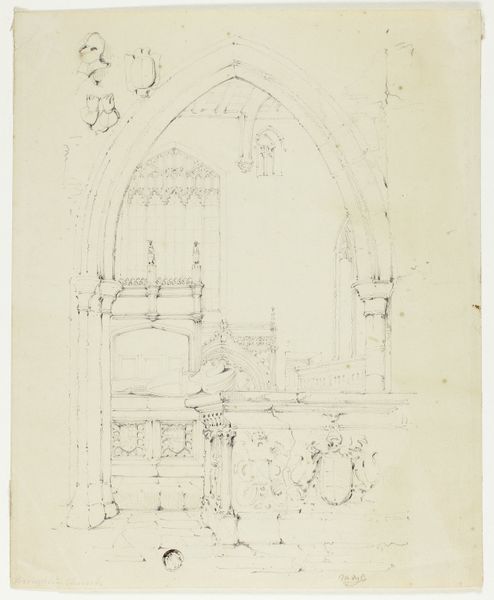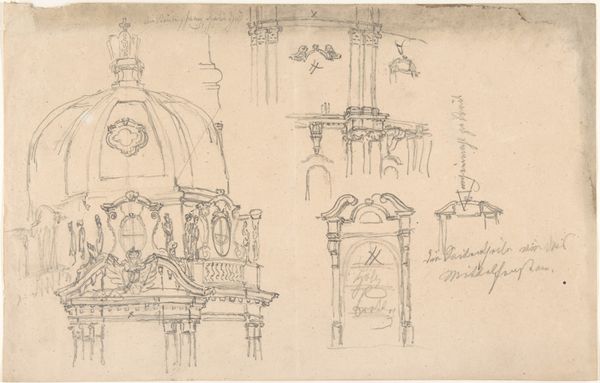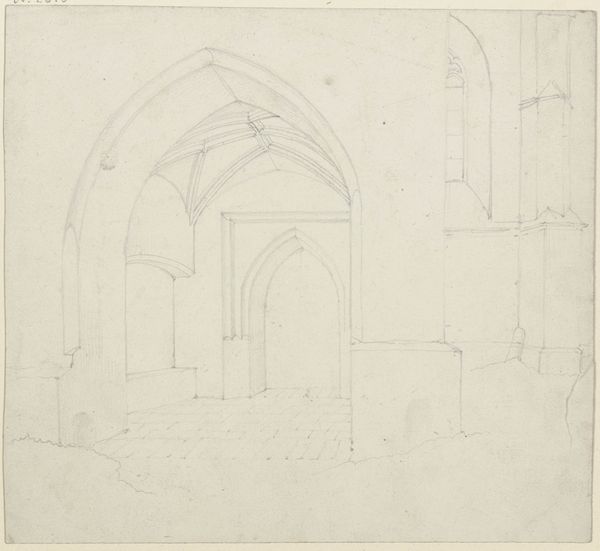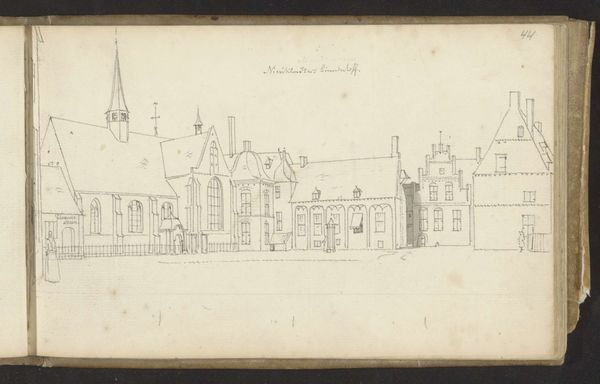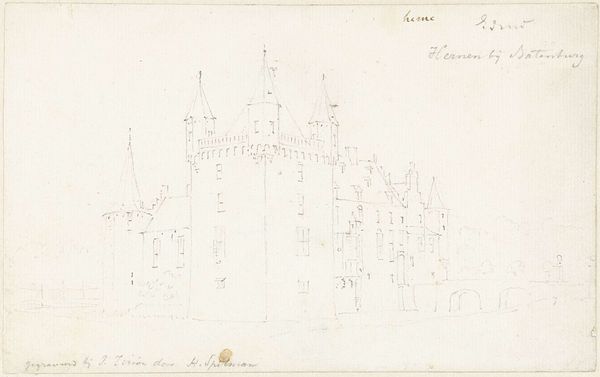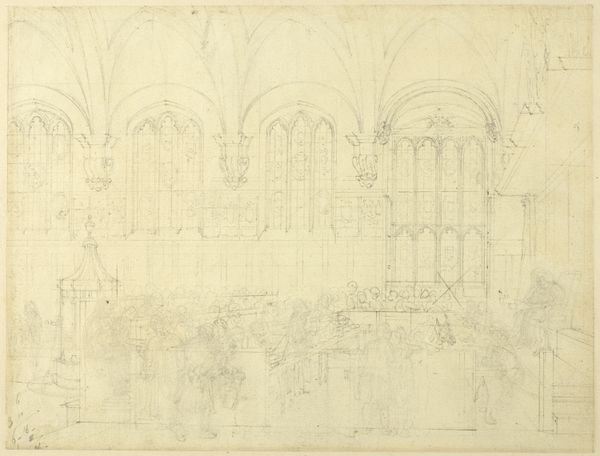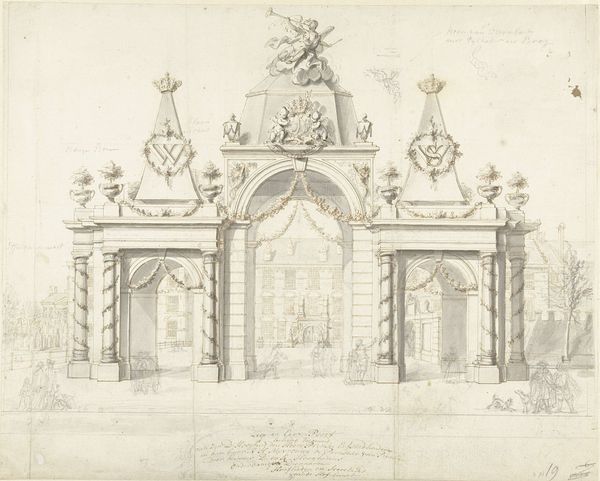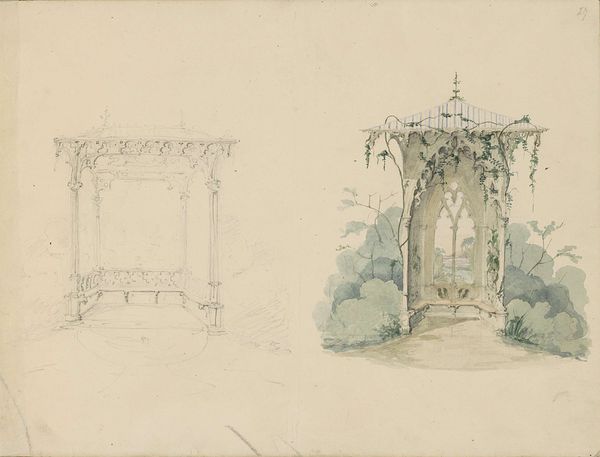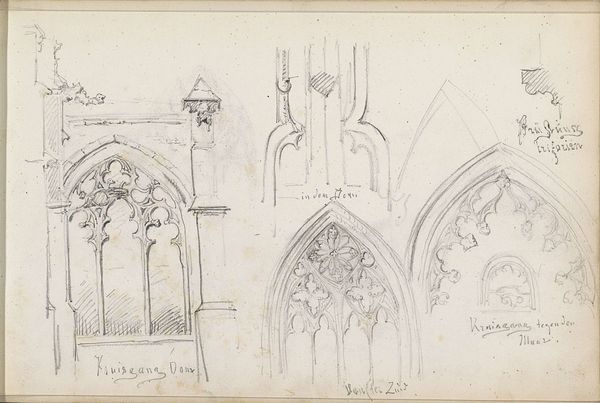
drawing, paper, ink, pencil, graphite, architecture
#
drawing
#
16_19th-century
#
pencil sketch
#
paper
#
ink
#
pencil
#
graphite
#
architecture
Copyright: Public Domain
Editor: This pencil and ink drawing, "Die Marktkreuze in Cheddar, Somersetshire, und Glastonbury," by Karl Ballenberger, captures two market crosses. I’m struck by how fragile they appear, like memories fading on paper. What stories do these architectural ruins tell you? Curator: Well, drawings like these often reflect a burgeoning interest in the past, particularly in the 19th century. The picturesque decay and implied history offered potent visual material for artists navigating industrialization and social change. How might the depiction of these specific structures have resonated with audiences at the time? Editor: Maybe a sense of loss? A yearning for a simpler, pre-industrial England? The fact they’re market crosses…were they also a symbol of dwindling local economies? Curator: Precisely. The market cross wasn’t just an architectural feature, it was the literal and figurative center of civic life. Ballenberger’s choice emphasizes a connection to community, faith, and perhaps, anxiety about the disintegration of those values amidst increasing urbanization. Note the careful inscription of their names below. Editor: It's interesting how a simple drawing becomes a social commentary, a quiet reflection of historical and cultural shifts. I was initially drawn to the visual aesthetic, but I can now see the deeper layers of meaning embedded within. Curator: Exactly, art doesn’t exist in a vacuum; it’s always participating in a wider social discourse. Editor: I see what you mean. Thank you! That helps me consider these drawings with a fresh perspective.
Comments
No comments
Be the first to comment and join the conversation on the ultimate creative platform.
